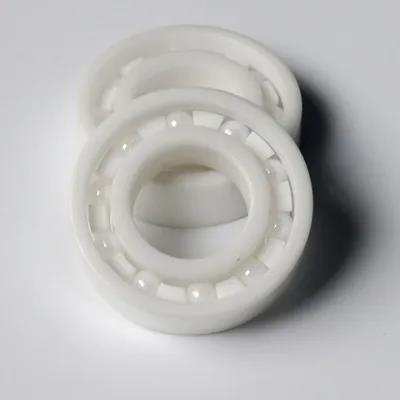As a ceramic material, zirconia has excellent properties such as high strength, high hardness, good wear resistance, acid and alkali resistance, and high temperature resistance.In addition to being widely used in the industrial field, with the vigorous development of the denture industry in recent years, zirconia ceramics have become the most potential denture material and have attracted the attention of many researchers.

The performance of zirconia ceramics will be affected by many factors. Today we will talk about the effect of sintering on certain properties of zirconia ceramics.
Sintering method
The traditional sintering method is the heating body through heat radiation, heat conduction, and heat convection, so that the heat is from the surface of zirconia to the inside, but the thermal conductivity of zirconia is worse than that of alumina and other ceramic materials. In order to prevent cracks caused by thermal stress, traditional heating has a slow heating rate and a long time, which makes the production cycle of zirconia longer and the production cost is high. Improving the processing technology of zirconia, shortening the processing time and reducing the production cost, clinically providing high-performance dental zirconia all-ceramic materials has gradually become a research hotspot in recent years, and microwave sintering is undoubtedly a promising sintering method.
Studies have found that microwave sintering and atmospheric sintering have no big difference in their semi-permeability and wear resistance. The reason is that the density of zirconia obtained by microwave sintering is similar to that of conventional sintering, and both are dense sintering, but The advantages of microwave sintering are low sintering temperature, high speed, and shortened sintering time. However, the temperature rise rate of atmospheric sintering is slower, and the sintering time is longer, and the entire sintering time is approximately 6-11h. Compared with atmospheric sintering, microwave sintering is a new type of sintering method, which has the advantages of short sintering time, high efficiency and energy saving, and can improve the microstructure of ceramics.
Some scholars also believe that zirconia can more maintain the metastable tetragonal phase after microwave sintering. This may be due to the fact that microwave rapid heating can achieve rapid densification of materials at lower temperatures, and the grains are smaller and uniform than normal pressure sintering, which is lower than t -The critical phase transition size of ZrO2, which is beneficial to maintain as much metastable state as possible at room temperature, and improve the strength and toughness of ceramic materials.
Two sintering process
Dense sintered zirconia ceramics can only be processed with emery tools due to their high hardness and high strength. The processing cost is high and the processing time is long. In order to solve the above problems, the two sintering process of zirconia ceramics is sometimes used. After the ceramic body is formed and initially sintered, it is enlarged and cut to the required shape by CAD/CAM, and then sintered to the final sintering temperature to make the material complete Dense.
Studies have found that the two sintering processes will change the sintering kinetics of zirconia ceramics, and will have a certain impact on the sintered density, mechanical properties and microstructure of zirconia ceramics. The primary dense sintered machinable zirconia ceramics have better mechanical properties than the twice sintered machinable zirconia ceramics, and the biaxial bending strength and fracture toughness of the primary sintered zirconia ceramics are higher than those of the secondary sintering. The fracture mode of primary sintered zirconia ceramics is transgranular/intergranular composite, and the crack direction is relatively straight; the fracture mode of twice sintered zirconia ceramics is mainly intergranular fracture, the crack direction is relatively tortuous, and the composite fracture mode has good material properties In a purely intergranular fracture mode.
Sintering vacuum
Zirconia must be sintered in a vacuum environment, a large number of bubbles will be generated during the sintering process, and in a vacuum environment, the bubbles are easily discharged from the molten porcelain body, which increases the density of zirconia, thereby increasing the zirconia The semi-permeability and mechanical properties.
Heating rate
In the sintering process of zirconia, in order to obtain good performance and expected results, a lower heating rate should be used. The high heating rate makes the internal temperature of zirconia uneven when it reaches the final sintering temperature, which leads to the appearance of cracks and the formation of pores. Studies have shown that as the heating rate increases, the crystallization time of zirconia crystals is shortened, the gas between the crystals cannot be discharged, and the internal porosity increases slightly; as the heating rate increases, the tetragonal zirconia begins to have A small amount of monoclinic phase exists, which will affect the mechanical properties. At the same time, as the heating rate increases, the crystal grains will be polarized, that is, the coexistence of larger and smaller crystal grains is likely to occur. A slower heating rate is conducive to the formation of more uniform crystal grains, thereby increasing the semi-permeability of zirconia.


